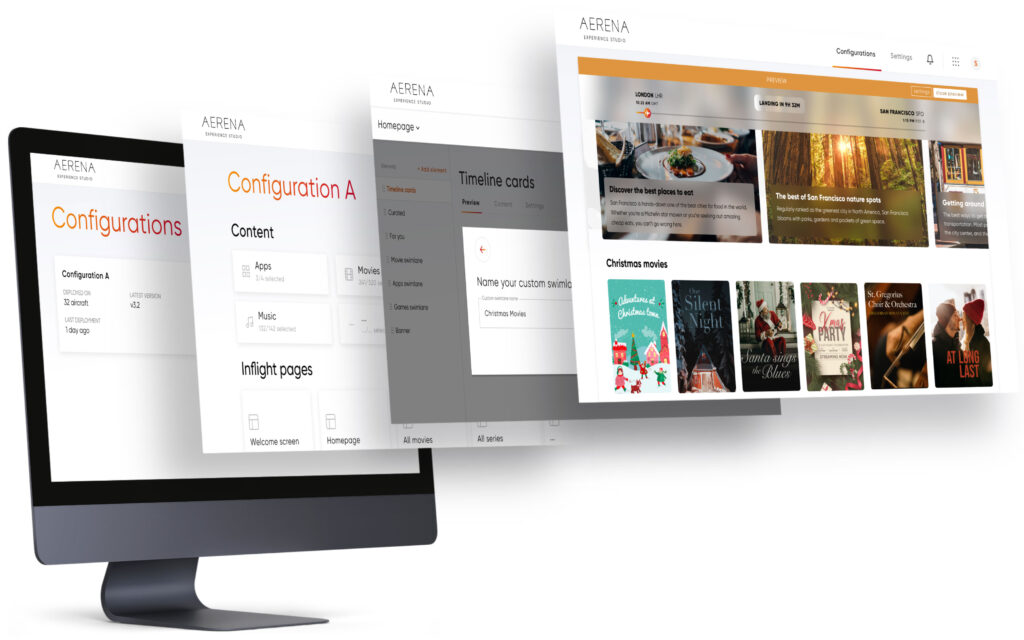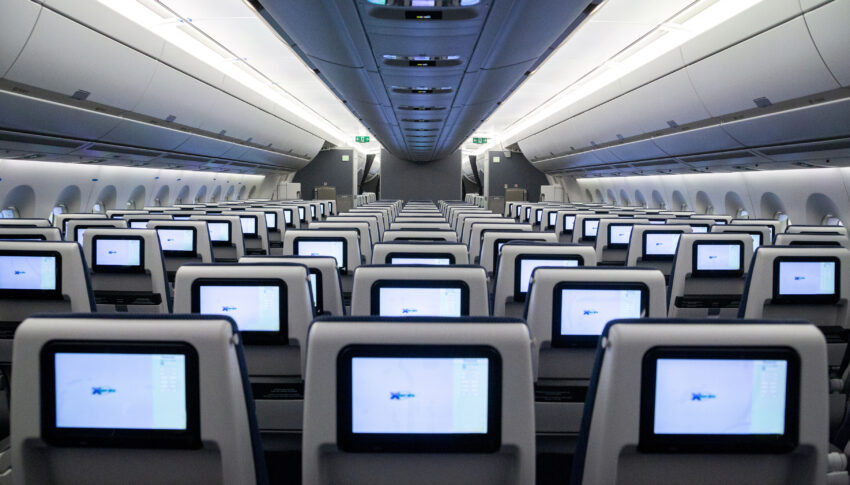Seatback screens are no longer just about showing the latest Hollywood blockbuster on demand — they’re developing into critical, interactive parts of the relationship between an airline, its suppliers, and passengers. Yet there is a growing disconnect between increasingly powerful, beautiful and high-performance screens on seats and the ground infrastructure that supports them.
One proposed answer for this ground infrastructure gap is the AERENA Experience Studio, a digitally native platform from AERQ, the joint venture between Korean electronics powerhouse LG and German MRO experts Lufthansa Technik.
“AERENA is the platform for digital engagement, empowerment and intelligence,” Verena Bintaro, AERQ’s head of marketing and public relations, tells us. “The platform will facilitate greater passenger engagement onboard the aircraft leading to a deeper understanding of passengers’ inflight behaviours and needs and thereby open new revenue opportunities for airlines and selected partners. AERENA is designed to provide passengers with the right content at the right time. This can for example be flight-phase-based content like the catering menu or order-to-seat information at the beginning of the flight, or information on public transportation or guided tours at the destination just before landing. This is all enabled by state-of-the-art fully digitalised cabin touchpoints such as an inseat system and cabin digital signage.”
The AERENA play is a threefold one: media content delivery, user interface configuration, and onboard app portfolio management. The goal is dramatically slashing leadtime for changes and improving the responsiveness and customisation that airlines want and need.
For content delivery, delays of two to three months are commonplace when it comes to processing files from content providers and uploading them to a fleet of aircraft, often manually via low-technology methods like the good old sneakernet, where files are literally walked to the aircraft on a drive and plugged in for updates.
When it comes to user interfaces, “airlines are empowered with a user-friendly ecosystem with one login only. Different digital tools enable fast day-to-day changes to their digital onboard offerings,” Bintaro says.
The Experience Studio also enables airline teams to configure and reconfigure user interfaces at a touch via a web-based system so simple that even this journalist could manage it during a demo at the Aircraft Interiors expo.
“AERENA offers software developers an end-to-end experience,” Bintaro says. “Software developers can access API and SDK for application development or test out their software remotely and simulate how it would react to relevant inflight services. They can then publish their application within the AERENA Experience Studio, where a digital marketplace is connecting airlines and developers.”

AERENA Experience Studio
App development, A-B testing, updates and deployment are all done simply and digitally — and, crucially, using what really feels like a modern, responsive system rather than something bolted onto a piece of legacy technology.
Bintaro highlights that “our proven containerisation technology provides flexibility by isolating commercial apps from core system functionalities. It enables full control over the software lifecycle and reduces the integration effort, empowering airlines to become playmakers of their own digital cabin experience. Moreover, it is a seat-centric system that focuses on redundancy and provides passengers with continuous service, even in the case when some components malfunction.”
Obstacles remain, however, especially around bringing aviation’s legacy technology stacks up to modern standards.
“A significant challenge is the big gap between current web application standards and a hardware-driven environment,” Bintaro concludes. “Airlines usually have to use physical test racks for small UI/UX changes, which in the end take months to implement. It is a big step to switch to AERENA, in which changes can be tested and implemented with just one login.”
Author: John Walton
Published 27 June 2023
Feature image: Airbus A350-1000 cabin




